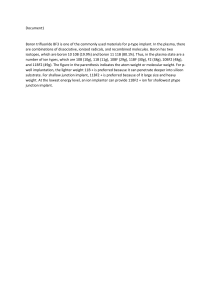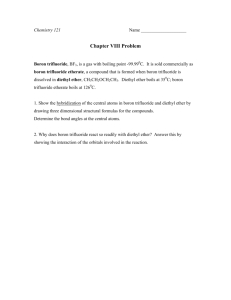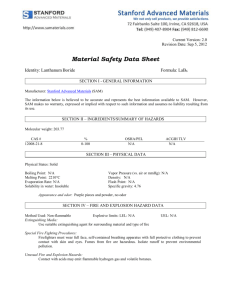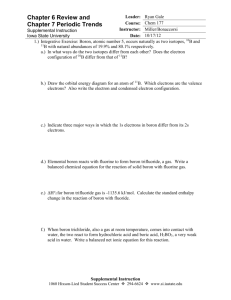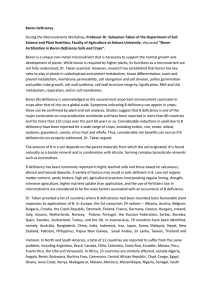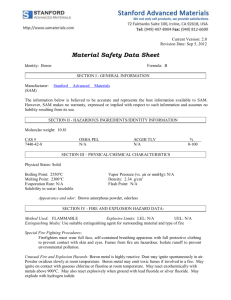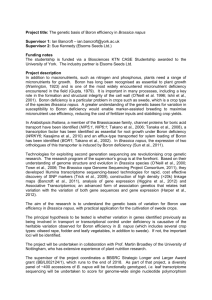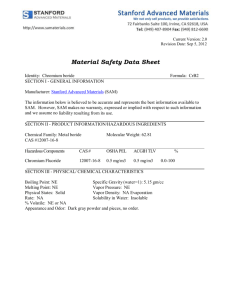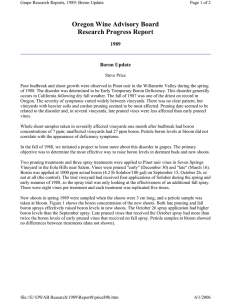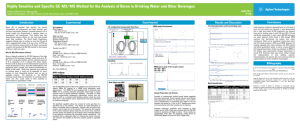Boron is the chemical element with atomic number 5 and the
advertisement
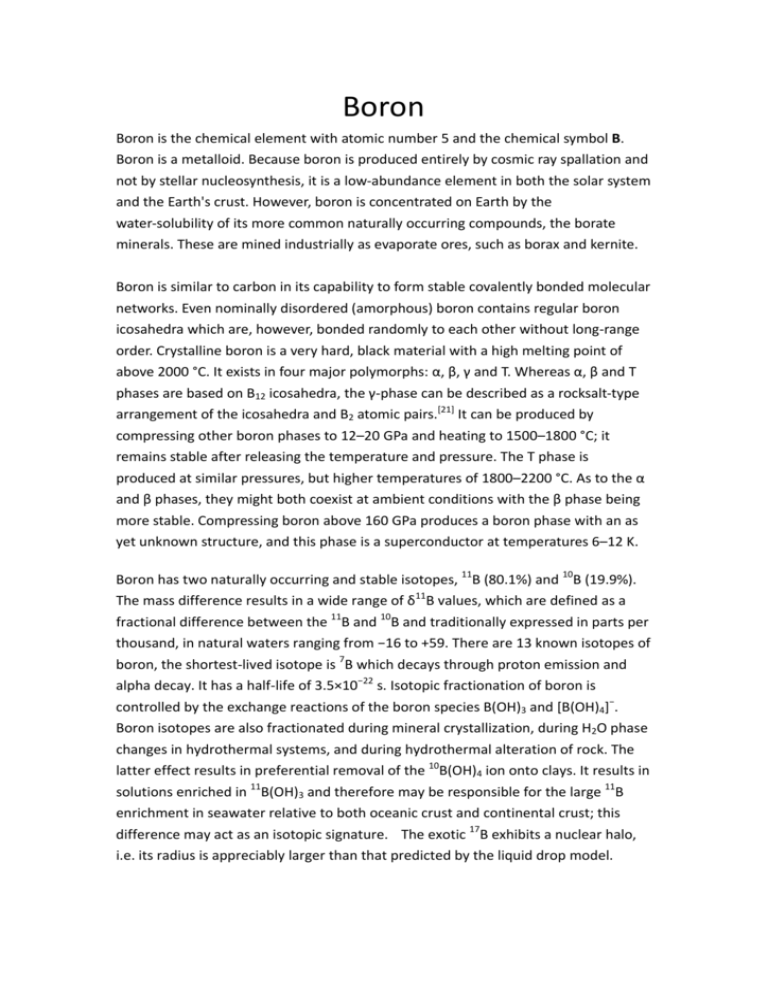
Boron Boron is the chemical element with atomic number 5 and the chemical symbol B. Boron is a metalloid. Because boron is produced entirely by cosmic ray spallation and not by stellar nucleosynthesis, it is a low‐abundance element in both the solar system and the Earth's crust. However, boron is concentrated on Earth by the water‐solubility of its more common naturally occurring compounds, the borate minerals. These are mined industrially as evaporate ores, such as borax and kernite. Boron is similar to carbon in its capability to form stable covalently bonded molecular networks. Even nominally disordered (amorphous) boron contains regular boron icosahedra which are, however, bonded randomly to each other without long‐range order. Crystalline boron is a very hard, black material with a high melting point of above 2000 °C. It exists in four major polymorphs: α, β, γ and T. Whereas α, β and T phases are based on B12 icosahedra, the γ‐phase can be described as a rocksalt‐type arrangement of the icosahedra and B2 atomic pairs.[21] It can be produced by compressing other boron phases to 12–20 GPa and heating to 1500–1800 °C; it remains stable after releasing the temperature and pressure. The T phase is produced at similar pressures, but higher temperatures of 1800–2200 °C. As to the α and β phases, they might both coexist at ambient conditions with the β phase being more stable. Compressing boron above 160 GPa produces a boron phase with an as yet unknown structure, and this phase is a superconductor at temperatures 6–12 K. Boron has two naturally occurring and stable isotopes, 11B (80.1%) and 10B (19.9%). The mass difference results in a wide range of δ11B values, which are defined as a fractional difference between the 11B and 10B and traditionally expressed in parts per thousand, in natural waters ranging from −16 to +59. There are 13 known isotopes of boron, the shortest‐lived isotope is 7B which decays through proton emission and alpha decay. It has a half‐life of 3.5×10−22 s. Isotopic fractionation of boron is controlled by the exchange reactions of the boron species B(OH)3 and [B(OH)4]−. Boron isotopes are also fractionated during mineral crystallization, during H2O phase changes in hydrothermal systems, and during hydrothermal alteration of rock. The latter effect results in preferential removal of the 10B(OH)4 ion onto clays. It results in solutions enriched in 11B(OH)3 and therefore may be responsible for the large 11B enrichment in seawater relative to both oceanic crust and continental crust; this difference may act as an isotopic signature. The exotic 17B exhibits a nuclear halo, i.e. its radius is appreciably larger than that predicted by the liquid drop model.
